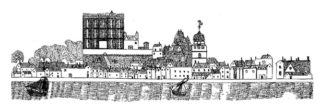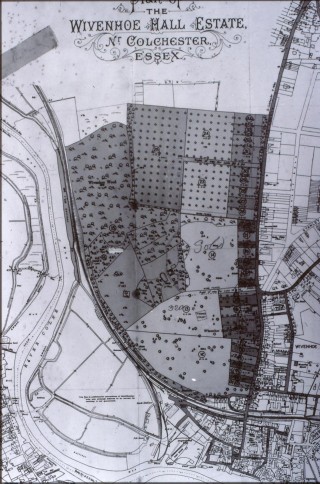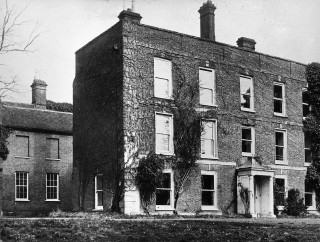Wivenhoe Hall
A brief summary of the Hall which goes back to at least the 1400s
High Street Research Team
High Street Trail index – click here
The Manor of Wivenhoe is first referred to in the Domesday Book in 1086: over the centuries it was held by the Mountfitchet, de Battaille, Sutton and Walton families. It then passed to the De Vere Family.
See image of the the coat of arms of the De Vere’s – Earls of Oxford and Lords of the Forest of Essex.
John de Vere, the 12th Earl of Oxford, married Elizabeth Howard in 1425, and as part of his settlement acquired the Manor of Wivenhoe, which Elizabeth had inherited from her mother, Joan Walton. Following her husband’s arrest and execution for treason in 1462, Elizabeth was later allowed to live in Wivenhoe in what was described as ‘a particularly fine mansion’ and she died in 1476.
In 1508 Elizabeth Scrope became the Countess of Oxford, when she married John de Vere 13th Earl of Oxford. She was one of the great ladies at the court of Henry Vlll and when she died in 1537, she was buried next to her first husband William Viscount Beaumont in St Mary’s Church, Wivenhoe. Their memorial brasses can be seen in the chancel.
Read more about the Will of the Countess of Oxford click here
In 1584 Edward de Vere, the 17th Earl of Oxford sold the Hall to Roger Townshend of Raynham in Norfolk. In 1657, his son, Horatio, sold the manor to Nicholas Corsellis, a descendant of Zegar Corsellis from Flanders, a London merchant and elder of the Dutch church. The Corsellis family held the Hall for the next 200 years although after falling into financial difficulties towards the end of the eighteenth century and early nineteenth century, a number of significant tenants lived at the Hall.
In 1899 Nicholas Caesar Corsellis Lawton (the younger) sold the property to Alexander Kay Barlow (Chairman of Wivenhoe Urban District Council) as part of a general sale of Manorial land. In 1921, the Hall was damaged by fire, and building materials from the Hall were sold. Part of the internal wooden panelling was removed to the new wing of Bures Hall. In 1927 the auction of Wivenhoe Hall Estate took place and the Hall was finally demolished.
Read more about Alexander Barlow – click here
For details of the sale of the estate – click here
The Auction of the Gardener’s Cottage (now called the Folly) – click here
What happened to the Gardener’s Cottage in 1956 – click here
High Street Trail index – click here
Resources:
- Wivenhoe History website – Pat Marsden & Chris Thompson
- The Story of Wivenhoe – Nicholas Butler
- The Day Before Yesterday – Olive Whaley
- Friends St. Mary’s booklet, St.Mary’s Church, Wivenhoe.
For a detailed history of the De Vere’s and Wivenhoe Hall, see the account which Chris Thompson produced for a public lecture for the Wivenhoe History Group in October 2013 – click here


![John DeVere Coat-of-Arms[landscape] The De Vere family coat of arms](https://www.wivenhoehistory.org.uk/wp-content/uploads/2015/03/JohnDeVere-coat-of-armslandscape.jpg)


![Wivenhoe Hall - 1922 [1] The remaining part of Wivenhoe Hall which finally burnt down in 1922](https://www.wivenhoehistory.org.uk/wp-content/uploads/2015/03/Wivenhoe-Hall-1922-1.jpg)





No Comments
Add a comment about this page